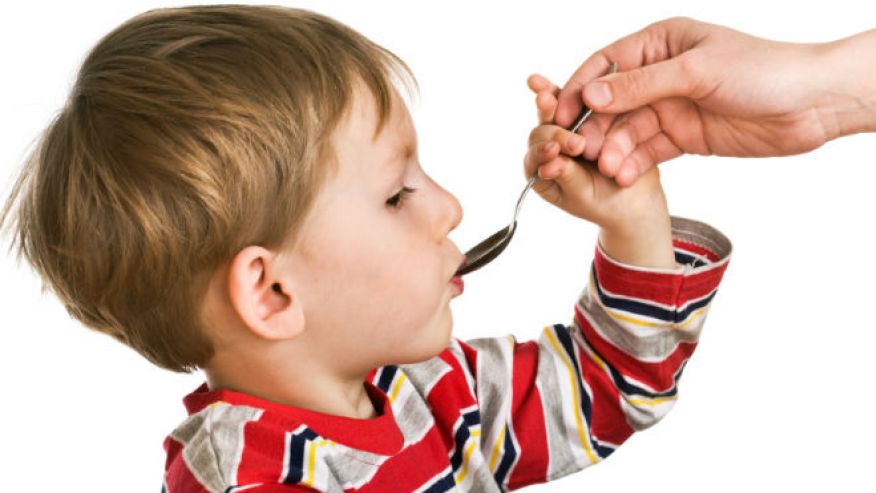Parents need to know this before giving their children prescription drugs

When your child is sick and needs a prescription medication, you need to know the correct dosage, how often to give it, if it should be taken with a meal and of course, the side effects.
Yet, you probably never give much thought to what is actually in the medication and how it’s prepared. What may surprise you is that prescriptions can actually be customized for your child with a technology known as compounding.
Find out what compound pharmaceuticals are, how they can help your child get well and what you need to do to make sure they’re safe.
What are compound pharmaceuticals?
Unlike medications from pharmaceutical manufacturers which are formulated only one way, compound pharmaceuticals use the same pure, active chemicals that are in FDA-approved medications and customize them so they are specifically suited for the patient.
Fifty years ago, most prescription medications in the U.S. were compounded but as drug manufacturers started to make more medications that could help the general population, compounding became less common.
Yet since the 1980s, studies have shown that about 5 percent of patients of all ages were not having their needs met by commercial medications. Since most pharmacies fill 400 prescriptions per day, on average, there has been a growing need.
-
Natural remedies to treat sick kids
-
Too sick for day care? Experts weigh in
“That’s 20 patients a day per pharmacy where their needs are not being met or they’re not being met the way they could be because the medication isn’t customized for them,” said Scott Karolchyk, vice president of formulations for QmedRx in Maitland, Flo.
Today, the majority of medications for kids are compounded, especially those given to children in cardiology and neonatal departments in hospitals, Karolchyk said.
A compound pharmacy can change the concentration or dosage, make a suspension liquid or add a flavor to make it more palatable. It can also help a child who needs a specific medication that is currently unavailable or off the market.
For example, a compound pharmacy can work with the doctor to ensure that infants who are sensitive to a medication that contain several drugs are treated with a medication that has minimal side effects, Karolchyk said.
Likewise, a compound pharmacy can create a unique concoction by mixing two types of creams together for a skin condition, for example. A medication can also be reformulated to exclude an ingredient like gluten or a dye that a child is allergic or that a child can’t tolerate because of side effects.
Is compounding safe?
There have been concerns in recent years about the safety of compounding pharmacies after a 2012 incident where 750 people developed fungal meningitis or other infections and 64 died from contaminated steroids dispensed by the New England Compounding Center in Massachusetts.
“They were essentially acting as a manufacturer under the disguise of a compounder so it was total neglect and certainly not a fair representation of the average compounder who genuinely cares about the patients,” said Blake Powers, chief operating officer for QmedRx.
Unlike drug manufacturers who are regulated by the FDA, the compound pharmaceutical industry is regulated by individual states. Nevertheless, there are strict guidelines including two key standards that compounding pharmacies must follow. One is the United States Pharmacopeia for both sterile and non-sterile preparations and the other is “good compounding practices,” or rules and regulations that all states follow.
In 2013, President Obama signed the Drug Quality and Security Act (DQSA) into law. Under the law, compounding pharmacies are encouraged to register with the FDA. Once they do, they are classified as outsourcing facilities so they can sell bulk drugs to hospitals and healthcare centers for what’s known as “office use.” These pharmacies will also be subject to the current good manufacturing practice (CGMP) regulations and inspections by the FDA.
Yet since the registration is voluntary, not all pharmacies will be regulated by the FDA.
“The medical community’s hope is that it will become more and more safe as compounding pharmacies are treated like manufacturers,” Dr. Carlo Reyes, an emergency medicine physician and pediatrician at Los Robles Hospital in Thousand Oaks, Calif.
What you need to know
If your child is prescribed a medication, ask your pediatrician if the medicine is necessary in that particular formulation. Also, if the only thing that is being changed is the flavor, find out if there is a way to make the medication more palatable without using a compound pharmacy.
It’s also a good idea to check with your insurance company because some may not cover the medication or have stipulations about the specific formulation.
Your doctor may have a relationship with a compounding pharmacy or may hand you the prescription and let you find one yourself. Either way, ask your pharmacist if they have had problems with the compounding pharmacy. You can also check the FDA’s website for inspections and recalls.
To find a reputable compounding pharmacy in your area, search the International Academy of Compounding Pharmacists and look for a pharmacy that holds accreditation from the Pharmacy Compounding Accreditation Board (PCAB), which only 2 percent do.
“It proves that they are meeting or exceeding all the compounding standards and regulations to ensure that their products are quality and that they’re safe,” Karolchyk said.












